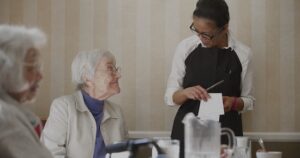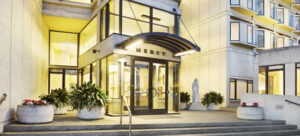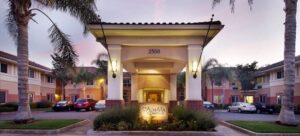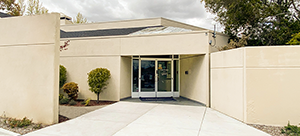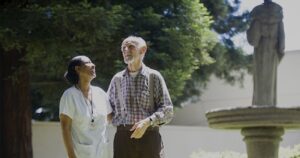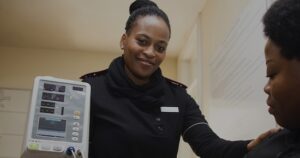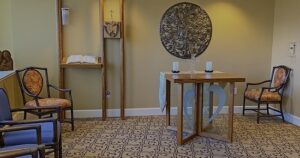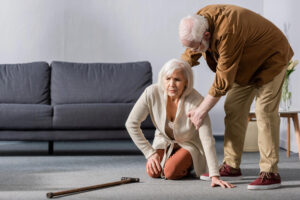As more older adults and their families search for high-quality long-term care solutions, assisted living facilities are stepping up services, decor, amenities, and more. Today’s facilities are more advanced and welcoming than ever before.
Technology for assisted living facilities is changing at a rapid pace and is making a positive difference in the lives of residents. Administrators can provide new amenities, upgrade safety, and offer more freedom and privacy thanks to innovations in the tech sector. Here’s how technology is revolutionizing long-term care for older adults.
How Technology for Assisted Living Facilities Is Changing Lives
Just as technology has changed the education and business sectors, it has also transformed the healthcare industry in remarkable ways. From electronic record keeping to telehealth appointments and more, patients, doctors, hospital staff, and caregivers have seen improvements in almost every aspect of their interactions.
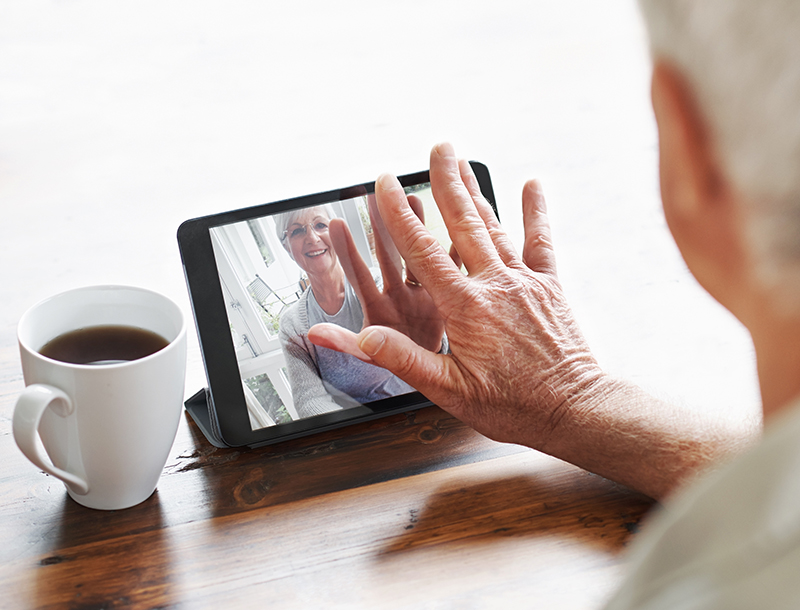
For older adults and people in long-term care facilities, technology isn’t just about convenience and fun; it’s about improving quality of life and changing health outcomes for the better. Some areas where assisted living technology has changed lives include:
- Cognitive health and engagement
- Family communication and connection
- Doctor-patient relationships
- Fall safety and facility security
- Health monitoring and medicine distribution
- Social and creative activities
Since society progresses so quickly when it comes to technology, the following innovations are really just the beginning of what is possible for long-term care services.
Technology Improves Patient-Provider Relationships
Age tends to bring more complex health issues to light, and older adults can sometimes find it difficult to get sensible, holistic care in their later years. Healthcare providers always want what is best for their patients, but it hasn’t always been easy to keep track of records and interactions. Fortunately, technology has an answer for that.
Electronic health records are digital copies or digital files of a patient’s health history, including surgeries, medications, and conditions. Facilities that transition to electronic health records can stay on top of complicated health issues by having all of the information they need at their fingertips. Also, electronic records are often considered more secure, which can help residents of long-term care and their families feel more at ease about privacy concerns.
Other innovations such as voice-activated technology and motion detection sensors can make it easier for residents to access the care they need when they need it. Assisted living facilities that implement these tech upgrades give staff and caregivers better tools to serve their residents. Motion detection may help facilities discover when a dementia patient wanders into an unsafe area, and these same devices may be able to recognize when a resident falls and can’t call for help.
Ultimately, when technology is used to make caring for residents easier, faster, and more effective, everyone benefits. These kinds of innovations can reduce caregiver stress and help residents feel more satisfied with their environment.
Personal Devices Enhance Quality of Life
One of the biggest changes in technology for assisted living facilities is the presence of personal devices. Laptops, cell phones, and tablets give residents a sense of freedom and choice when it comes to how to spend their time. They have access to wifi and media on their devices, which gives them opportunities to learn new things, connect with friends, and stay in touch with family.
Digital health monitoring tech is also beneficial in assisted living environments. Residents may wear these personal devices to transmit information on their health in real time, such as their heart rate and step count.
Some facilities may offer unique social networking websites or other online resources available only to residents through the use of a proprietary app or company website. Residents and their family members can stay connected and informed by using these tools on their phones and computers.

Updated Tech Keeps Facilities and Residents Secure
Many older adults choose to move to assisted living because they want to improve their sense of personal safety and have access to trained staff and healthcare providers such as certified nurses. This may be due to increasing cognitive difficulties, mobility issues, or other health conditions. Technology has made facilities more secure and helps residents stay safe at all times.
Call buttons represented the first wave of new tech in long-term care facilities, and these devices make it much easier for staff to respond to residents’ needs. Technology is moving forward very quickly, though, and now facilities are exploring digital security solutions for doors, beds, thermometers, and more. Residents may find that modern long-term care facilities feature access codes to enter or exit the premises as well as voice-activated devices in rooms that control the temperature and lighting.
Technology Increases Resident Engagement
Assisted living technology can now bring virtual experiences into the lives of residents. For people living with mobility issues or experiencing cognitive decline, these tools can make a huge difference in their quality of life. Even if you or a loved one can’t leave the facility, you can participate in a virtual tour of your favorite museum and interact with amazing works of art.
From streaming residents’ favorite classic movies to playing VR and online games, technology boosts engagement in long-term care facilities. For organizations that have relied on the same activities for years, using technology is a great way to mix things up for residents, keeping them active and interested in the world around them.
Technology for Assisted Living Facilities Can Improve Your Loved One’s Quality of Life
It’s never easy to make the decision to transition yourself or a loved one into long-term care. While you’re exploring your options, make sure to investigate the technology for assisted living facilities that exist at your preferred locations. You may feel that, at the most basic level, keeping electronic records is a non-negotiable for you and your family, but you may be looking for much more when it comes to digital services and smart devices.
Technology can improve the quality of life for you or your loved one, so it makes sense to choose a facility that takes tech upgrades seriously. Resident dignity should always come first, which is why the holistic care you’ll find at our facilities is unmatched in today’s long-term care environment. Schedule an appointment to visit one of our residential environments for older adults to find out more today.
Sources:
http://www.assistedlivingfacilities.org/resources/how-tech-advanced-are-facilities-/
http://www.aplaceformom.com/blog/2013-8-27-future-senior-care/
http://www.nydailynews.com/new-york/queens/senior-centers-turn-skype-article-1.982714


